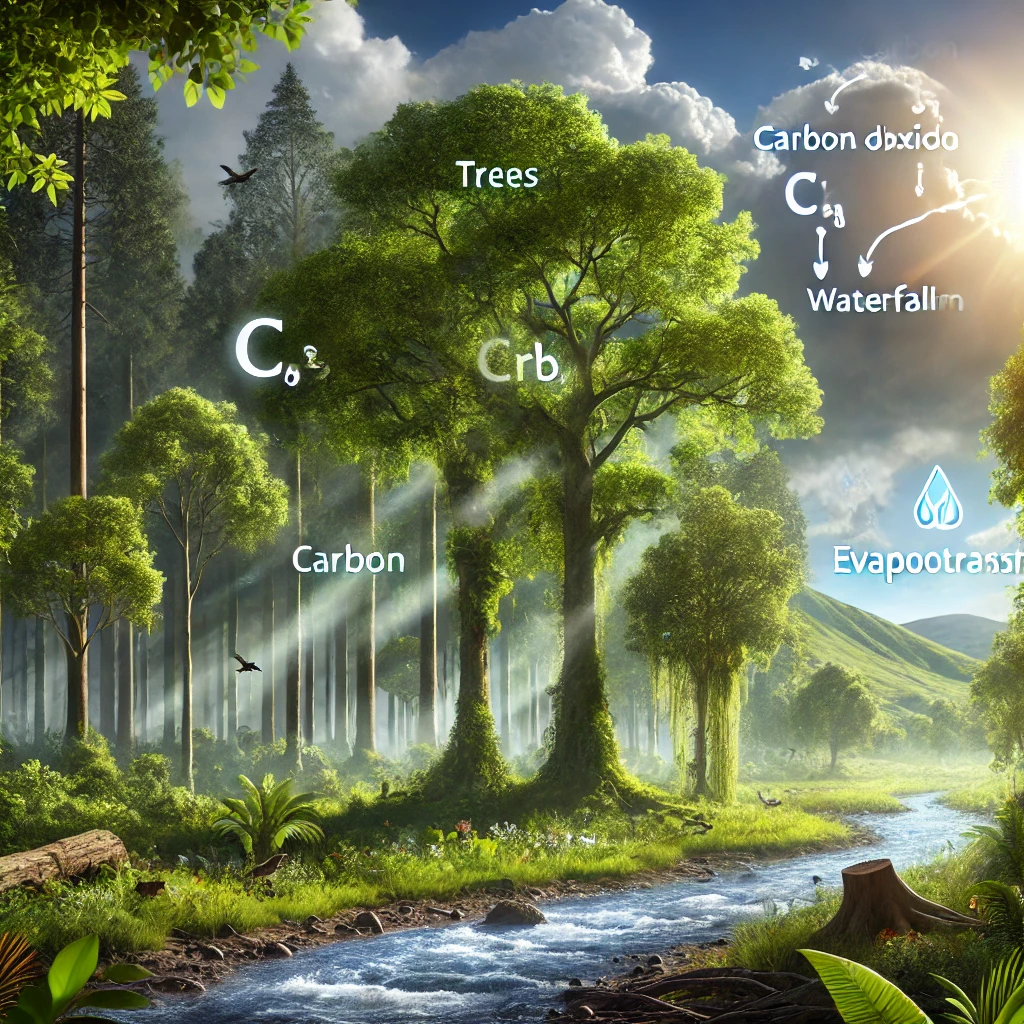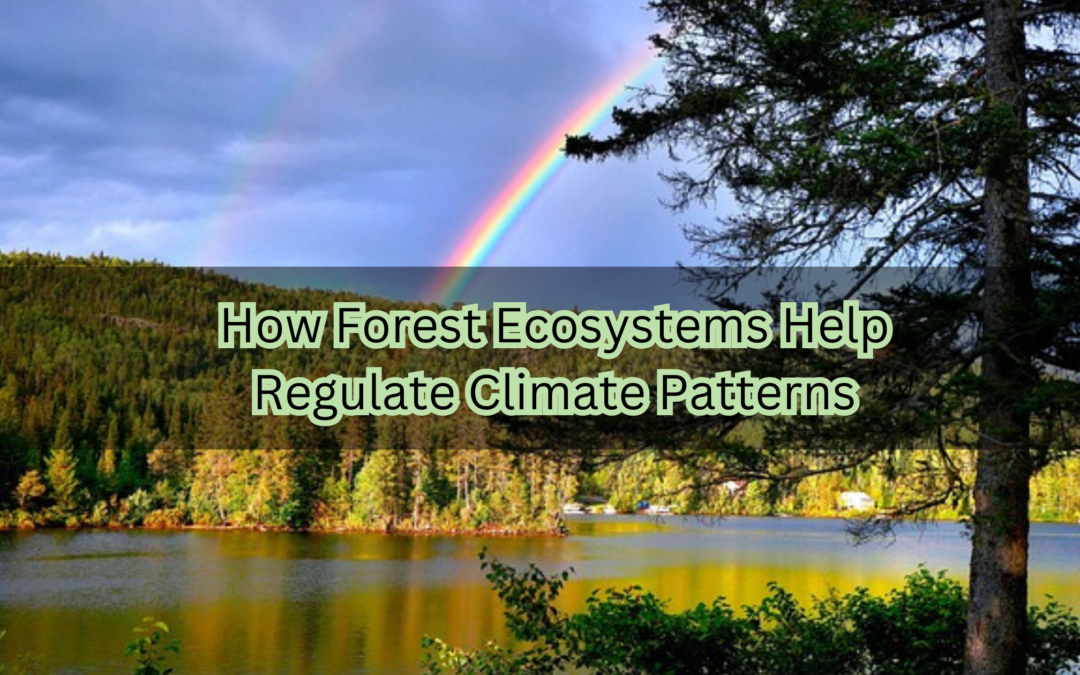Forest ecosystems are essential for regulating both local and global climate patterns. By absorbing carbon, influencing rainfall, and stabilizing temperatures, they play a crucial role in maintaining environmental balance. Protecting and restoring these ecosystems is key to combating climate change and ensuring a stable future for our planet.
Carbon Sequestration: Forest Ecosystems Absorb CO2 and Help Fight Climate Change
Forests are often called the “lungs of the planet” because they absorb carbon dioxide (CO2) from the atmosphere during photosynthesis. Trees store this carbon in their trunks, branches, leaves, and roots, reducing the amount of CO2, a major greenhouse gas, in the atmosphere.
Tropical rainforests, in particular, are massive carbon sinks. However, when forests are cut down or damaged, the carbon stored in trees is released back into the atmosphere, accelerating climate change. Protecting forests is one of the most effective ways to reduce global warming.
Forest Ecosystems and Local Climate: How Trees Control Rainfall and Temperatures
Forests not only impact global climate but also have a significant effect on local weather patterns. Through a process called evapotranspiration, trees release moisture into the air, which helps form clouds and ultimately brings rainfall. When large areas of forest are cleared, this water cycle is disrupted, leading to less rain and longer dry seasons.
The Amazon rainforest, for example, generates moisture that affects not only South America but also global weather patterns. In addition, forests help cool local environments by providing shade and reducing air temperatures through transpiration, creating more livable climates for people and wildlife.
Global Atmospheric Circulation: How Forests Shape Weather Around the World
Forests play a key role in global atmospheric circulation, which influences weather across continents. For instance, the moisture produced by the Amazon affects rainfall far beyond South America, even influencing weather in North America. Boreal forests in the northern hemisphere also impact the planet’s albedo, or reflectivity, which determines how much sunlight is absorbed or reflected by the Earth.
Deforestation in these regions can disrupt global weather patterns, making extreme weather events more frequent and intense.

The Dangers of Deforestation and Forest Degradation
Despite their importance, forests are under constant threat from logging, agriculture, and urban development. The loss of forest cover leads to more CO2 in the atmosphere, speeding up global warming. It also results in less biodiversity and disrupts the lives of people who depend on forests for their livelihoods.
Deforestation contributes to desertification and even threatens water supplies, as fewer trees mean less rainfall. Preserving and restoring forests is essential for maintaining their role in regulating the climate.
Solutions: Reforestation, Agroforestry, and Sustainable Forest Management
Thankfully, there are ways to protect and restore forests. Reforestation (planting trees in deforested areas) and afforestation (planting trees in areas that previously had no forest) can help reverse the damage. Sustainable forest management practices ensure that forests are used in a way that maintains their ecological balance.
International programs like REDD+ (Reducing Emissions from Deforestation and Forest Degradation) focus on conserving forests while promoting sustainable livelihoods. Agroforestry, which integrates trees with crops and livestock, is another way to manage land more sustainably, striking a balance between agricultural production and forest conservation.
Conclusion: Why Forest Ecosystems are Keys to Fighting Climate Change
Forests play a vital role in regulating climate patterns both locally and globally. They absorb carbon, control rainfall, and maintain stable temperatures, making them essential in the fight against climate change. By protecting forests and supporting reforestation efforts, we can help ensure a more stable climate and a healthier planet for future generations.
For more insights on how forest ecosystems regulate climate, visit EAT Community.
Related Articles and Resources:
- The Dual Impact of Wildfires on Forest Ecosystems and Biodiversity
- Carbon Farming: Innovative Farming Practices to Adopt
- The Role of Urban Forests in Mitigating Urban Heat Islands: Strategies and Benefits
- Rainforests: What’s so Cool About Them?
- The Importance of the Amazon Rainforest
- Urban Miracles: How Regenerative Agriculture Sowing Seeds of Joy and Sustainability in Our Cities
- What is REDD+?



